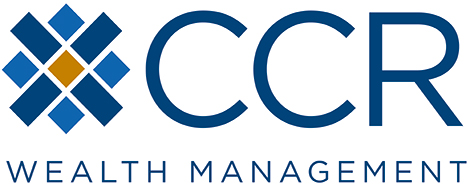Turn Your RMDs into Charitable Donations
If you dream of your financial legacy leaving a lasting impact on the world, there's a way you can make a difference. You can use your Required Minimum Distribution (RMD) to make charitable donations, a strategy that could benefit both you and the causes important to you.
We try to avoid hitting you with too many acronyms; it can be overwhelming and confusing, especially when learning new terminology. Below, we've listed a few acronyms that we'll be referring to in this email so that you have a handy reference point whenever you need it.

If you dream of your financial legacy leaving a lasting impact on the world, there's a way you can make a difference. You can use your Required Minimum Distribution (RMD) to make charitable donations, a strategy that could benefit both you and the causes important to you.
We try to avoid hitting you with too many acronyms; it can be overwhelming and confusing, especially when learning new terminology. Below, we've listed a few acronyms that we'll be referring to in this email so that you have a handy reference point whenever you need it.
You must withdraw money once you turn 73 if you have a traditional IRA. These withdrawals, or RMDs, are taxed at the ordinary income tax rate, which can sometimes push your annual income into a higher tax bracket, which may cause retirement concerns.
However, there's a strategy that may help you put these distributions to good use and can help manage your tax situation: the Qualified Charitable Distribution (QCD) rule. This rule allows traditional IRA owners to deduct their RMDs on their tax returns if they donate the money to a charity or a non-profit organization. You can effectively manage your income taxes by lowering your Adjusted Gross Income (AGI). Please note the IRS puts a $108,000 limit on the total distribution for the 2025 tax year.1
Here's how it works: Once you decide to make a QCD, you choose a charity that qualifies as a charitable organization under IRS rules. Let your IRA custodian know your intention to donate your distribution and the amount you'd like. The custodian will then send a check to the charity on your behalf. It's important to remember that QCDs must be made directly from your IRA; you may lose the benefit if the distribution is paid to you first and then passed on to a charitable organization.1,2
Who should consider using the QCD rule? It makes sense if you:
- Would like your RMD to benefit another organization
- Want to support an approved charity rather than a foundation
- Want to make a larger donation than you could in cash3
This email is for informational purposes only and is not a replacement for real-life advice. Consider speaking to a tax, legal, or accounting professional before modifying your charitable giving strategy.
This approach can provide some tax relief while helping fulfill your philanthropic goals.
If you have questions about QCD, we may have some information to help.
Sources:
- IRS.gov, 2024
- The Internal Revenue Service has specific rules and guidelines for charitable contributions. Before taking any specific action, be sure to consult with your tax professional.
- Once you reach age 73, you must begin taking the required minimum distributions from a traditional IRA in most circumstances. Withdrawals from traditional IRAs are taxed as ordinary income and, if taken before age 59½, may be subject to a 10% federal income tax penalty. Contributions to a traditional IRA may be fully or partially deductible, depending on your adjusted gross income.
Follow us on social media for more timely content delivered directly to your news feed!
